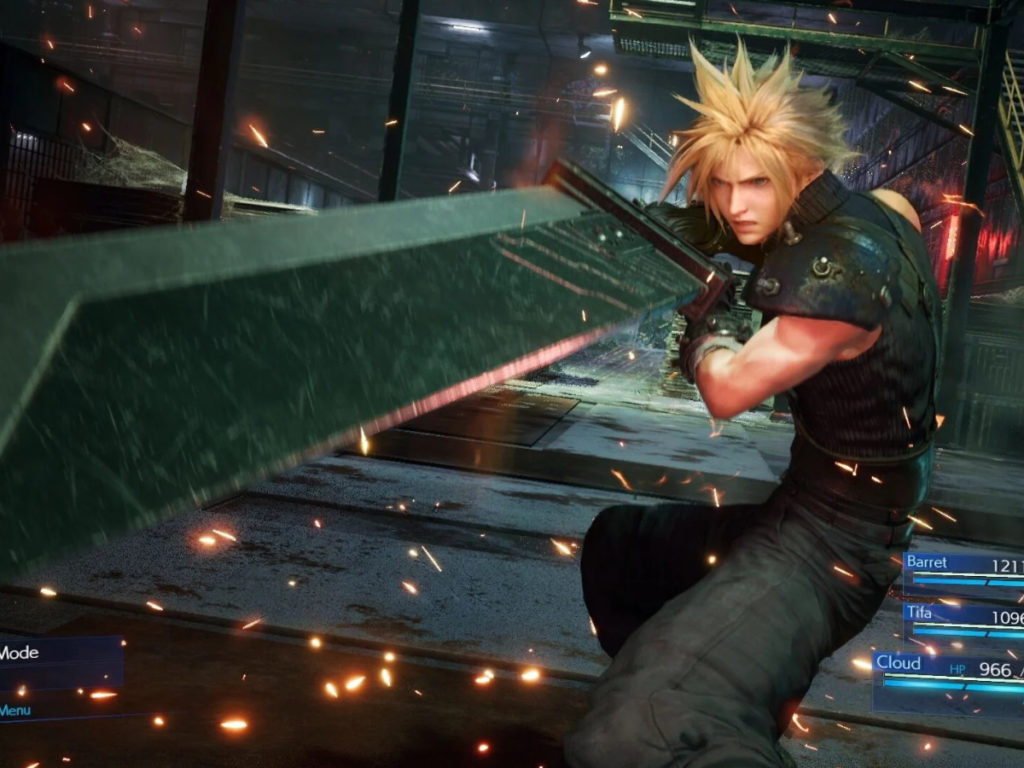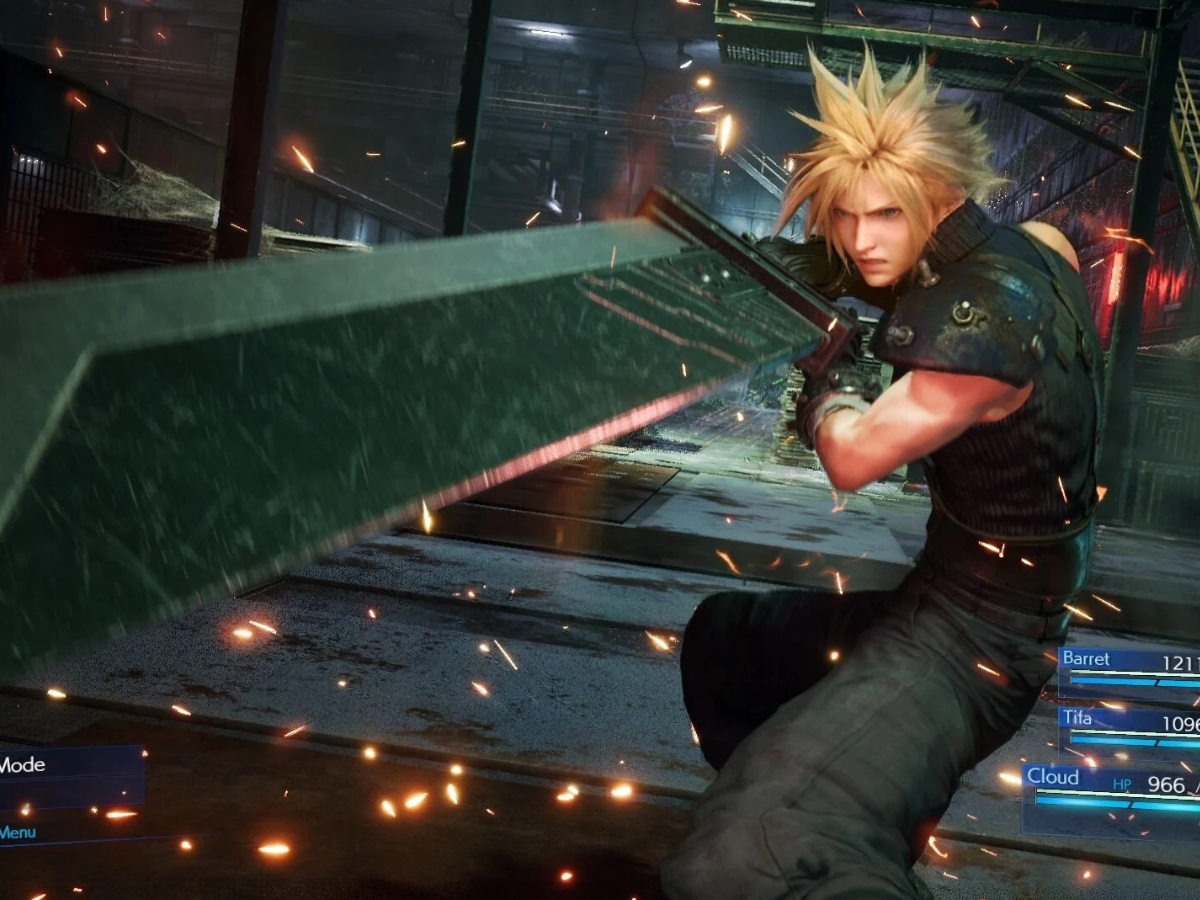
The word ‘final’ in Final Fantasy is very oxymoronic from a series perspective. How can something be so final if it has 15 different fantasies? Yet, players quickly understand the meaning behind the title when fully enveloped in one of the 15 titles’ story and gameplay. None bigger than perhaps “Final Fantasy VII,” (FF7) the ambitious JRPG PlayStation title starring the buster sword wielding, pretty boy Cloud Strife, SOLDIER First Class. It’s iconic and an embodiment of the Final Fantasy moniker ever since it’s initial launch on Jan. 31, 1999, over 21 years ago. In those 21 years, SquareEnix has capitalized on the material by releasing other games and movies to deepen the FF7 lore. For over 10 years, developer and director Tetsuya Nomura has been thinking and constructing his re-imagining of FF7. Officially dubbed the “Final Fantasy VII Remake” (FF7R). This title serves as the first installment in a episodic line of video games that will eventually fully encompass the massive “Final Fantasy VII” epic; yet Nomura has made it his mission to give something new to returning fans. Despite only comprising the intro to the story of FF7, the remake seeks to give fans a true recreation, even if it takes multiple discs like the late 90’s original.
Story
SquareEnix’s remake comprises the same story beats as the original. Set in the complex mega city, Midgar, players spend their whole journey exploring the maze-like infrastructure. The Shinra Electric Company has monopolized the city thanks to their control over the gigantic Mako reactors that use the planet’s energy, The Lifestream, to fabricate Mako energy. The main character, Cloud Strife, gets wrapped up in a terrorist plot to make some quick cash. The plan is simple, Cloud accompanies Barett, Biggs, Wedge and Jesse to destroy reactor one and reduce the strain on the planet. Cloud goes through with the mission becoming the muscle for the group called Avalanche who seek to destroy Shinra. After a successful attack, the group retreats to the Sector 7 Slums underneath the gigantic city built on plates. After deciding to help Avalanche on their next missions; Cloud becomes fully wrapped up in the fight to save the planet as he works to uncover the dirty truth behind Shinra and come to terms with his identity. All while being pestered by visions of Sephiroth, the mysterious legendary SOLDIER who was presumed to be dead after a great war. While familiar to returning fans, the story does include lots of departures from the original that ends up changing multiple key moments. These changes are mainly good as they add new elements to the Sector 5-7 Slums that originally just served as the intro.
FF7R wastes no time in setting up the stakes and reminding the players constantly of the looming threat Shinra presents. This is thanks to the Turks who pester Cloud and the party throughout the story; characters like Reno and Rude bring their own attitude and charisma to the world that adds extra weight to the events of the story. They act as good foils to our heroes and work to add a hostile feeling to Midgar, and it puts the power struggle of the people in the slums of sectors 5-7 compared to those above the plate. It’s a depressing but important image to capture as players spend their days roaming the slums trying to help the inhabitants and progressing by venturing to other sectors. The game does ramp it up eventually with some great motorcycle action and thrilling boss fights throughout. Especially toward the final chapters, some of the game’s more brilliant scenes, new and returning, are showcased elegantly and tastefully. I found myself so enveloped in the world and its progression that I ruined my sleep schedule because of the addicting combat that urges players forward to master its intricacies.
Gameplay
In 1999, the original FF7’s combat was rich in intricacies because of the real-time attack RPG combat it showcased and utilized. While not a new type of battle system, FF7’s implementation and use set a standard for many other games to follow. Quite a lot has changed in the 21 years since the original debuted its combat style and the genre has changed so much as well. While the gameplay may not be strictly a turn based role playing game, it still uses multiple elements that help add to the allure of becoming stronger over time. Each character has a weapon, armor and accessory slot that can be filled by buying and looting the various items along the way. The main way players obtain more spells, skills and abilities is through Materia. It’s a wonderful ball of Mako energy that holds special properties inside. Materia helps build on characters’ strengths such as adding a steal skill to get more items from enemies or giving Cloud a fire spell to use in battle. The Materia gets slotted into characters’ gear that actually show up during cutscenes. All of these essential parts of crafting the main heroes unlocks so much potential and possibilities which naturally only plays into how insanely fun the combat is. Especially with how easy it is to fall prey to the eternal grind for limitless power.
Borrowing from “Final Fantasy XV,” FF7R utilizes the same open world battle system that smoothly transitions from exploration to combat with commands, spells and items to be used by the Active Time Battle (ATB) gauge. The meter fills up during the players basic attacks and combos and when used stops time to allow for quick decision making. In combat, timing of ATB is everything and will decide the tide of battle for better or worse. All enemies now have a Stagger gauge that increases as the party deals damage or exploits a weakness. It fills over time until the enemy becomes dazed for maximum damage output. Combat is very fluid as the basic attacks can all be chained for combos into special abilities or spells; the implementation of the ATB gauge invites more methodical approaches to combat which is a necessary inclusion for some of the high-paced action. As Cloud puts it, limits are meant to be broken and that has never been more true in this remake. The stunning visuals of each character’s charge move, Limit Breaks, are great and showcase the best abilities and damage each character has to offer. Not to mention, most battles allow for the use of a summon for a monster to join the fight. Returning are some fan favorites like the ice goddess Shiva and the infamous chocobo and moogle duo. Square even remembered to add the illustrious Fat Chocobo to enter the fray!
SquareEnix definitely gave fans a well structured and balanced array of tools for both during the main story and after. The whole combat system is very involved but can be extremely rewarding if players take advantage of ATB and stagger. The game clearly leads players to learn more by incentivizing the use of stagger in combat to output so much damage. Aside from battling, the gritty underworld of Midgar is yours to explore as it offers lots of distractions. Surprisingly enough, there’s a decent amount of side quests that get opened up quite quickly. Even toward the final stretch there’s even more rewarding quests the heroes can uncover. There’s also a decent balance of minigames including dart throwing, pull up contests and even dancing! If you’re looking for raw action, the colosseum has you covered to test your battle prowess. Just helping out the downtrodden people who inhabit Midgar’s underbelly is fun and even hilarious at times. It’s great getting to know the people who surround Cloud and his rebellion, especially considering the turn of events in the story and future follow-ups in succeeding games. Surrounding all of that is some of the best Final Fantasy music we’ve heard composed in a long time.
Soundtrack
Musically, the original had a great set of original music composed by Noubu Uematsu that used a cacophony of synths and sounds to create a wonderful range of music. He returns to compose FF7Rs new musical arrangements while also retaining the legacy of the original in key instances and remixes for new areas. The game actually uses a unique sound engine that works to transition the music alongside the gameplay from exploration to battle. Thus, multiple versions of songs had to be recorded in order to utilize the seamless system. This elegant recreation shows just how amazing Uematsu is to flex his amazing composer skills for a true rebuild of FF7. He knows exactly when to use the orchestra’s full potential to really set the tone. FF7R even makes collecting all of the music discs a side distraction for those interested in the old classics.
Ever since its debut at E3 2015, “Final Fantasy VII Remake” has shown the capabilities and talent that is spearheading the project’s future. It showcases promising groundwork and fulfilling gameplay for future discs to tackle the insane scope of FF7. The amount of delicate care and work done to attract older and newer fans shows how much SquareEnix believes in the recreation of one of the all time greatest video games. Despite only comprising the intro to the tragic and weird story of FF7, it’s a wild adventure that is really amazing. It’s good to know that SquareEnix is taking their time with the remake and that in a few more years, Cloud’s journey continues forward. SquareEnix was scheduled for an appearance at the now cancelled E3 2020, which only begs the question on what they might have to show. In 2019, executive producer Yoshinori Kitase indicated that work on a second game was already in progress, and because so much work has been done on the first part of the game, completing the next few will be quicker. Final Fantasy is no stranger to having multiple releases to comprise one full story as many others have had extra titles released or addendum type content. What’s important is what FF7R seeks to showcase, and the capabilities of what a fully fledged remake could look like is very reassuring. The title certainly succeeds on that front despite being a bit shallow for being called “Remake.”
Verdict:
“Final Fantasy VII Remake” is an extremely faithful recreation that adds more intrigue to the already gigantic story of FF7. Nomura has meticulously decided to give special interest in reimagining the timeless story, and for the most part it succeeds by delivering stunning gameplay and exceptional visuals. Despite only being Disc 1 in a larger rebuild, it’s an amazing display of what the future has in store for “Final Fantasy VII.”








